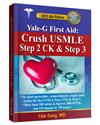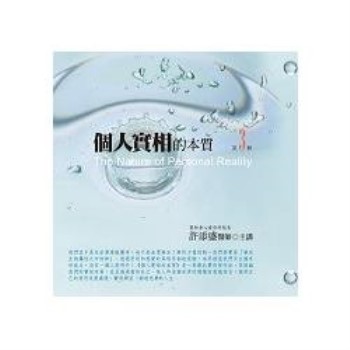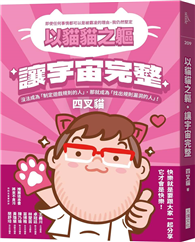★ 台灣孩子成為美國醫師!
★ 美國醫師執照USMLE考試最強教戰守策!
★ AMAZON網站同類書籍最高評級與評語!
真哪噠跨界出版鉅獻!
1. 本書收集了最新、最全面、最豐富的臨床急診知識。
2. 對 USMLE Step 2 CK and Step 3中經常測試的大多數疾病和病症進行系統、全面和簡明的回顧。
3. 內容條理清晰,格式易於記憶。800道USMLE格式的臨床問題,155張臨床彩色圖像,附帶簡要的診斷特徵,幫助你更深入地消化和記憶相關的基礎臨床知識。
徹底消化這本書,使用 UWorld.com 和 NBME.org 上最好的 Q-bank 自我評估進行練習,並做筆記,您就可以高分擊敗 USMLE Step 2 CK 和 Step 3,獲得 USMLE 和 ECFMG 的門票!
本書亦可成為美國和世界各地醫學院教育的強大學習輔助工具。
※ 本書內容為英文。
This new edition of Yale-G First Aid: Crush USMLE Step 2 CK & Step 3 has been continuously updated from the previous editions.
According to the large volume of feedbacks on Amazon and to our author team from medical students and doctors in the US and around the world, this book has collected the most up-to-date, comprehensive, and high-yield clinical knowledge (CK) for the USMLE Step 2 CK and Step 3 as the best-rated one in the USMLE market.
This book can be the equivalent of "First Aid for the USMLE Step 1" for the USMLE Step 2 CK. Important features of this book include:
1. Systematic, comprehensive, and concise reviews of most diseases and disorders that are frequently tested in the USMLE Step 2 CK and Step 3. They are composed of important concepts, etiologies, essentials of diagnoses, differential diagnoses, treatments, and preventive measures.
2. Well-organized contents in easy-to-remember formats, abbreviations, and more than 100 tables and figures with summaries and differential diagnoses, and with necessary details of high-yield “orderly steps” in the diagnosis and management of major diseases. Most important clinical points are in “PEARLS”, underlined, and bolded as priority contents.
3. 800 high-yield clinical questions in USMLE format to help you digest the fundamental knowledge.
4. 155 high-yield clinical color images with brief diagnostic features (in the back of book to cut cost) for deeper digestion and memory of the associated fundamental clinical knowledge.
After thorough digestion of this book followed by practice with the best Q-bank on UWorld.com and NBME.org Self-Assessments, with note-taking, you are ready to crush the USMLE Step 2 CK and Step 3 with high scores!
| FindBook |
|
有 1 項符合
Yale Gong的圖書 |
 |
$ 836 ~ 855 | Yale-G First Aid: Crush USMLE Step 2 CK and Step 3 (8th Edition)
作者:Yale Gong 出版社:真哪噠出版社 出版日期:2023-09-15 語言:繁體書  共 3 筆 → 查價格、看圖書介紹 共 3 筆 → 查價格、看圖書介紹
|
|
|
圖書介紹 - 資料來源:博客來 評分:
圖書名稱:Yale-G First Aid: Crush USMLE Step 2 CK and Step 3 (8th Edition)
內容簡介
作者介紹
作者簡介
Yale Gong
貢雲華,醫學博士,碩士,持有美國醫師執照考試(USMLE) 證書及美國醫學博士資格。為美國神經與臨床科學家,擔任科學顧問近30年,曾任聯邦軍醫大學(USUHS)神經內科助理教授、賓夕法尼亞大學醫學院神經內科資深研究員、聯邦醫學研究與發展指揮部科學顧問。
Yale-G First Aid: Crush USMLE Step 2 CK and Step 3 (臨床醫學精華) 第八版是集其十年心血之作,主要基於美國醫學界權威的美國醫師執照考試委員會的要求和Current Medical Diagnosis and Treatment等內容,第七版在同類書中獲得AMAZON 的最高評級與評語 (https://www.amazon.com/Yale-G-First-Aid-Crush-USMLE/dp/1637957580)。
本書堪稱全球醫學生畢業與執照考試的最佳工具書之一。
Yale Gong, MD, MS, USMLE-Certified, has been an Assistant Professor of Neurology in USUHS, Senior Research Investigator in the University of Pennsylvania School of Medicine, Neuroscientist, Clinical Scientist, and Army Scientific Advisor for the past 30 years in the US. The latest 8th edition of Yale-G First Aid: Crush USMLE Step 2 CK and Step 3 under publication is the intelligent fruits after the author’s ten years of persistent efforts, based on the requirements of USMLE.org and authoritative Current Medical Diagnosis and Treatment, etc. The 7th edition has gained the best rating and reader’s reviews among all similar books on amazon.com. This book can be one of the best tool books for all medical students’ graduating and licensing examinations around the world!
Yale Gong
貢雲華,醫學博士,碩士,持有美國醫師執照考試(USMLE) 證書及美國醫學博士資格。為美國神經與臨床科學家,擔任科學顧問近30年,曾任聯邦軍醫大學(USUHS)神經內科助理教授、賓夕法尼亞大學醫學院神經內科資深研究員、聯邦醫學研究與發展指揮部科學顧問。
Yale-G First Aid: Crush USMLE Step 2 CK and Step 3 (臨床醫學精華) 第八版是集其十年心血之作,主要基於美國醫學界權威的美國醫師執照考試委員會的要求和Current Medical Diagnosis and Treatment等內容,第七版在同類書中獲得AMAZON 的最高評級與評語 (https://www.amazon.com/Yale-G-First-Aid-Crush-USMLE/dp/1637957580)。
本書堪稱全球醫學生畢業與執照考試的最佳工具書之一。
Yale Gong, MD, MS, USMLE-Certified, has been an Assistant Professor of Neurology in USUHS, Senior Research Investigator in the University of Pennsylvania School of Medicine, Neuroscientist, Clinical Scientist, and Army Scientific Advisor for the past 30 years in the US. The latest 8th edition of Yale-G First Aid: Crush USMLE Step 2 CK and Step 3 under publication is the intelligent fruits after the author’s ten years of persistent efforts, based on the requirements of USMLE.org and authoritative Current Medical Diagnosis and Treatment, etc. The 7th edition has gained the best rating and reader’s reviews among all similar books on amazon.com. This book can be one of the best tool books for all medical students’ graduating and licensing examinations around the world!
目錄
Chapter 1: INFECTIOUS DISEASES (Suggested range according to usmle.org: 7-8%) 1
PEARLS—High-yield Applications of Antibiotics 1
EYE, EAR, NOSE AND THROAT INFECTIONS 5
RESPIRATORY TRACT INFECTIONS 10
INFECTIONS OF THE CENTRAL NERVOUS SYSTEM (CNS) 19
GASTROINTESTINAL TRACT INFECTIONS 23
VIRAL HEPATITIS 25
UROGENITAL INFECTIONS AND SEXUALLY TRANSMITTED DISEASES (STD) 30
UROGENITAL INFECTIONS 30
SEXUALLY TRANSMITTED DISEASES (STD) 34
OPPORTUNISTIC INFECTIONS (OIs) 40
BLOOD INFECTIONS AND RELATED DISEASES 42
BONE, JOINT AND MUSCLE INFECTIONS 47
ARTHROPOD-BORNE AND ZOONOTIC INFECTIONS 50
Chapter 1: High-yield Questions (HYQ) 54
Chapter 2: CARDIOVASCULAR DISEASES (Suggested range: 10-11%) 71
CARDIAC ARRHYTHMIAS 72
ISCHEMIC HEART DISEASE (IHD)—CORONARY ARTERY DISEASE (CAD) 75
DYSLIPIDEMIA 88
SYSTEMIC HYPERTENSION 90
PULMONARY HEART DISEASE 94
ENDOCARDIAL AND VALVULAR HEART DISEASES 95
VALVULAR HEART DISEASES 95
CONGENITAL HEART DISEASES 104
MYOCARDIAL DISEASES 111
PERICARDIAL DISEASES 115
VASCULAR DISEASES 119
Chapter 2: High-yield Questions (HYQ) 122
Chapter 3: RESPIRATORY DISEASES (Suggested range: 7-8%) 134
GAS EXCHANGE DISORDERS AND RESPIRATORY FAILURE 135
OBSTRUCTIVE LUNG DISEASES 137
RESTRICTIVE AND INTERSTITIAL LUNG DISEASES 143
ALVEOLAR FILLING DISEASES 148
DISEASES OF THE PULMONARY VASCULATURE 150
PLEURAL DISEASES 153
NEOPLASMS OF THE RESPIRATORY TRACT 154
MISCELLANEOUS DISEASES 158
Chapter 3: High-yield Questions (HYQ) 159
Chapter 4: DIGESTIVE AND NUTRITIONAL DISORDERS (Suggested range: 9-10%) 166
DISEASES OF THE ESOPHAGUS 166
DISEASES OF THE STOMACH AND DUODENUM 173
DISEASES OF THE PANCREAS 178
DISEASES OF THE GALLBLADDER 181
DISORDERS OF THE LIVER 185
GENETIC BILIRUBINEMIA 192
DISORDERS OF THE INTESTINE 193
INFLAMMATORY BOWEL DISEASES (IBD) 197
NEOPLASMS OF THE INTESTINE 201
HEMORRHAGE OF THE DIGESTIVE TRACT 203
MISCELLANEOUS DISEASES 205
NUTRITIONAL MEDICINE AND DISORDERS 208
Chapter 4: High-yield Questions (YHQ) 215
Chapter 5: ENDOCRINOLOGY (Suggested range: 7-8%) 223
DISORDERS OF GLUCOSE AND FAT METABOLISM 223
PITUITARY AND HYPOTHALAMIC DISEASES 228
DISORDERS OF THE ANTERIOR PITUITARY LOBE 229
DISORDERS OF THE POSTERIOR PITUITARY LOBE 232
DISEASES OF THE THYROID 234
DISORDERS OF THE PARATHYROID GLANDS 242
DISORDERS OF THE ADRENAL GLAND 245
HYPOGONADISM 250
Chapter 5: High-yield Questions (HYQ) 252
Chapter 6: HEMATOLOGY AND IMMUNOLOGIC DISORDERS (Suggested range: 9-10%) 259
ANEMIAS 259
NEUTROPENIA (LEUKOPENIA) 270
COAGULOPATHY 271
PLATELET DISORDERS 275
HEMATOPOIETIC NEOPLASMS 276
MYELOID NEOPLASMS 282
MYELOPROLIFERATIVE NEOPLASMS (MPNs) 283
PLASMA CELL DISORDERS 289
IMMUNOLOGIC DISEASES 292
ALLERGIC DISEASES 292
PRIMARY IMMUNODEFICIENCY DISORDERS 293
TRANSPLANTATION MEDICINE 296
Chapter 6: High-yield Questions (HYQ) 298
Chapter 7: RENAL, UROGENITAL, ACID-BASE, AND ELECTROLYTE DISORDERS
(Suggested range: 8-9%) 307
ACID-BASE DISORDER 307
TUBULOINTERSTITIAL DISEASES 308
GLOMERULAR DISEASES 311
ELECTROLYTE DISORDERS 316
NEPHROLITHIASIS 320
RENAL CYSTIC DESEASES 321
UROGENITAL NEOPLASMS 322
MISCELLANEOUS DISORDERS 328
Chapter 7: High-yield Questions (HYQ) 330
Chapter 8: MUSCULOSKELETAL DISEASES (Suggested range: 8-9%) 337
ARTHRITIS 338
DEGENERATIVE AND CRYSTAL-INDUCED ARTHRITIS 338
SERONEGATIVE ARTHRITIS 341
AUTOIMMUNE CONNECTIVE TISSUE DISEASES 342
VASCULITIS SYNDROMES 348
PAIN SYNDROMES 354
SPORTS MEDICINE — SPORTS INJURIES 362
MISCELLANEOUS DISEASES 365
ORTHOPEDIC NEOPLASMS 368
Chapter 8: High-yield Questions (HYQ) 371
Chapter 9: NEUROLOGY AND SPECIAL SENSES (Suggested range: 9-10%) 379
NEUROLOGICAL TRAUMA AND INJURY 379
HEAD TRAUMA AND BRAIN INJURY 379
SPINAL CORD INJURY (SCI) 381
CEREBROVASCULAR DISEASES (STROKE) 384
ISCHEMIC STROKE 384
HEMORRHAGIC STROKE 387
EPILEPSY AND SEIZURE DISORDERS 389
HEADACHE 392
NEUROCOGNITIVE DISORDERS 393
CENTRAL NERVOUS MYELINOPATHIES 399
PERIPHERAL NEUROPATHIES 401
CENTRAL NERVOUS MOVEMENT DISORDERS 403
INTRACRANIAL NEOPLASMS 406
MISCELLANEOUS DISORDERS 407
VERTIGO AND DISEQUILIBRIUM 409
HEARING DISORDERS 411
OPHTHALMOLOGY—VISUAL DISORDERS 412
Chapter 9: High-yield Questions (HYQ) 417
Chapter 10: DERMATOLOGY (Suggested range: 5-6%) 427
COMMON TERMINOLOGY AND LESIONS IN DERMATOLOGY 427
DERMATOLOGIC INFECTIONS 428
VIRAL INFECTIONS 428
BACTERIAL INFECTIONS 431
FUNGAL INFECTIONS 434
PARASITIC INFECTIONS 436
IMMUNE-MEDIATED SKIN DISEASES 437
DYSPLASIAS AND NEOPLASIAS 444
MISCELLANEOUS SKIN DISORDERS 450
Chapter 10: High-yield Questions (HYQ) 452
Chapter 11: GYNECOLOGY (Suggested range: 7-8%) 458
AMENORRHEA AND RELATED DISORDERS 458
ABNORMAL UTERINE-VAGINAL HEMORRHAGE 462
GYNECOLOGIC INFECTIONS 464
GYNECOLOGIC NEOPLASMS 466
UTERINE NEOPLASMS 466
CERVICAL AND VAGINAL NEOPLASMS 468
OVARIAN MASSES 471
OVARIAN NEOPLASMS 472
BREAST DISEASES 474
MISCELLANEOUS DISORDERS 477
CONTRACEPTION 479
Chapter 11: High-yield Questions (HYQ) 480
Chapter 12: OBSTETRICS (Suggested range: 5-6%) 487
PHYSIOLOGY OF NORMAL PREGNANCY 487
NORMAL LABOR 495
ABNORMAL LABOR 496
MEDICAL COMPLICATIONS OF PREGNANCY 499
OBSTETRICAL COMPLICATIONS OF PREGNANCY 504
POSTNATAL (PUERPERIUM) 509
TERATOLOGY 511
Chapter 12: High-yield Questions (HYQ) 512
Chapter 13: PEDIATRICS (Suggested range: 9-10%) 518
NEWBORN DISEASES 518
DEVELOPMENT AND RELATED PROBLEMS . 531
PEDIATRIC NUTRITION AND RELATED DISORDERS. 531
PEDIATRIC INFECTIONS 531
CONGENITAL INFECTIONS 531
VIRAL INFECTIONS IN CHILDREN 533
RESPIRATORY TRACT INFECTIONS IN CHILDREN 534
CONGENITAL ABNORMALITIES 536
GENETIC SYNDROMES 540
GENETIC METABOLIC ABNORMALITIES 541
LYSOSOMAL AND GLYCOGEN STORAGE DISEASES 542
Chapter 13: High-yield Questions (HYQ) 544
Chapter 14: EMERGENCY MEDICINE (Suggested range: 5-6%) 551
SHOCK AND CARDIOPULMONARY RESUSCITATION 551
ALTERED MENTAL STATUS 552
ANAPHYLAXIS 554
TOXICOLOGY 555
INTOXICATIONS OF SPECIAL TOXIC SUBSTANCES 556
INTERACTION, INTOXICATION AND DETOXIFICATION OF DRUGS 561
THERMAL INJURIES 565
DROWNING 567
VENOMOUS BITES 568
Chapter 15: SURGERY (Suggested range: 10-11%) 569
TRAUMA AND INJURY 569
CHEST TRAUMA 570
ABDOMINAL TRAUMA 574
PELVIC AND UROGENITAL TRAUMA 576
EXTREMITY TRAUMA 579
ORTHOPEDIC TRAUMA AND INJURIES 579
PREOPERATIVE EVALUATION 585
COMPLICATIONS OF SURGERY 586
ANALGESIA AND ANESTHESIA IN SURGERY AND OBSTETRICS 587
VOLUME DISORDERS 588
ABDOMINAL SURGERY 590
Chapter 14-15: High-Yield Questions (HYQ) 596
Chapter 16: PSYCHIATRY (Suggested range: 9-10%) 610
BASICS 610
NEURODEVELOPMENTAL DISORDERS 612
DISRUPTIVE, IMPULSE-CONTROL, AND CONDUCT DISORDERS 618
DEPRESSIVE DISORDERS 621
BIPOLAR AND RELATED DISORDERS 625
NEUROTIC, STRESS-RELATED, AND SOMATOFORM DISORDERS 627
ANXIETY DISORDERS 627
TRAUMA- AND STRESSOR-RELATED DISORDERS 631
PERSONALITY DISORDERS 633
SCHIZOPHRENIA SPECTRUM AND OTHER PSYCHOTIC DISORDERS 637
SOMATIC SYMPTOM AND RELATED DISORDERS 642
SUBSTANCE-RELATED AND ADDICTIVE DISORDERS 646
FEEDING AND EATING DISORDERS 652
SLEEP-WAKE DISORDERS 655
SEXUAL DISORDERS 660
MIX—SOCIAL SCIENCES: SUICIDALITY AND DEATH 667
Chapter 16: High-yield Questions (HYQ) 667
Chapter 17: EPIDEMIOLOGY, BIOSTATISTICS, PREVENTIVE MEDICINE, AND MEDICAL ETHICS
(Range: 5-6%) 675
EPIDEMIOLOGY AND LITERATURE INTERPRETATION 675
ASSESSMENT OF DISEASE FREQUENCIES 675
ASSESSMENT OF DIAGNOSTIC TESTS 677
ASSESSMENT OF RISK AND MEASURES OF EFFECT 679
TYPES AND EVALUATIONS OF STUDIES 681
BIOSTATISTICS AND LITERATURE INTERPRETATION 683
INFERENTIAL STATISTICS 683
PREVENTIVE MEDICINE 690
POPULATION HEALTH 690
IMMUNIZATION AND VACCINATION 696
MEDICAL AND RESEARCH ETHICS 698
ABUSE 703
Chapter 17: High-yield Questions (HYQ) 706
NORMAL LAB VALUES OF IMPORTANCE 715
INDEX 718
ABBREVIATIONS 725
HIGH-YIELD CLINICAL IMAGES 729
PEARLS—High-yield Applications of Antibiotics 1
EYE, EAR, NOSE AND THROAT INFECTIONS 5
RESPIRATORY TRACT INFECTIONS 10
INFECTIONS OF THE CENTRAL NERVOUS SYSTEM (CNS) 19
GASTROINTESTINAL TRACT INFECTIONS 23
VIRAL HEPATITIS 25
UROGENITAL INFECTIONS AND SEXUALLY TRANSMITTED DISEASES (STD) 30
UROGENITAL INFECTIONS 30
SEXUALLY TRANSMITTED DISEASES (STD) 34
OPPORTUNISTIC INFECTIONS (OIs) 40
BLOOD INFECTIONS AND RELATED DISEASES 42
BONE, JOINT AND MUSCLE INFECTIONS 47
ARTHROPOD-BORNE AND ZOONOTIC INFECTIONS 50
Chapter 1: High-yield Questions (HYQ) 54
Chapter 2: CARDIOVASCULAR DISEASES (Suggested range: 10-11%) 71
CARDIAC ARRHYTHMIAS 72
ISCHEMIC HEART DISEASE (IHD)—CORONARY ARTERY DISEASE (CAD) 75
DYSLIPIDEMIA 88
SYSTEMIC HYPERTENSION 90
PULMONARY HEART DISEASE 94
ENDOCARDIAL AND VALVULAR HEART DISEASES 95
VALVULAR HEART DISEASES 95
CONGENITAL HEART DISEASES 104
MYOCARDIAL DISEASES 111
PERICARDIAL DISEASES 115
VASCULAR DISEASES 119
Chapter 2: High-yield Questions (HYQ) 122
Chapter 3: RESPIRATORY DISEASES (Suggested range: 7-8%) 134
GAS EXCHANGE DISORDERS AND RESPIRATORY FAILURE 135
OBSTRUCTIVE LUNG DISEASES 137
RESTRICTIVE AND INTERSTITIAL LUNG DISEASES 143
ALVEOLAR FILLING DISEASES 148
DISEASES OF THE PULMONARY VASCULATURE 150
PLEURAL DISEASES 153
NEOPLASMS OF THE RESPIRATORY TRACT 154
MISCELLANEOUS DISEASES 158
Chapter 3: High-yield Questions (HYQ) 159
Chapter 4: DIGESTIVE AND NUTRITIONAL DISORDERS (Suggested range: 9-10%) 166
DISEASES OF THE ESOPHAGUS 166
DISEASES OF THE STOMACH AND DUODENUM 173
DISEASES OF THE PANCREAS 178
DISEASES OF THE GALLBLADDER 181
DISORDERS OF THE LIVER 185
GENETIC BILIRUBINEMIA 192
DISORDERS OF THE INTESTINE 193
INFLAMMATORY BOWEL DISEASES (IBD) 197
NEOPLASMS OF THE INTESTINE 201
HEMORRHAGE OF THE DIGESTIVE TRACT 203
MISCELLANEOUS DISEASES 205
NUTRITIONAL MEDICINE AND DISORDERS 208
Chapter 4: High-yield Questions (YHQ) 215
Chapter 5: ENDOCRINOLOGY (Suggested range: 7-8%) 223
DISORDERS OF GLUCOSE AND FAT METABOLISM 223
PITUITARY AND HYPOTHALAMIC DISEASES 228
DISORDERS OF THE ANTERIOR PITUITARY LOBE 229
DISORDERS OF THE POSTERIOR PITUITARY LOBE 232
DISEASES OF THE THYROID 234
DISORDERS OF THE PARATHYROID GLANDS 242
DISORDERS OF THE ADRENAL GLAND 245
HYPOGONADISM 250
Chapter 5: High-yield Questions (HYQ) 252
Chapter 6: HEMATOLOGY AND IMMUNOLOGIC DISORDERS (Suggested range: 9-10%) 259
ANEMIAS 259
NEUTROPENIA (LEUKOPENIA) 270
COAGULOPATHY 271
PLATELET DISORDERS 275
HEMATOPOIETIC NEOPLASMS 276
MYELOID NEOPLASMS 282
MYELOPROLIFERATIVE NEOPLASMS (MPNs) 283
PLASMA CELL DISORDERS 289
IMMUNOLOGIC DISEASES 292
ALLERGIC DISEASES 292
PRIMARY IMMUNODEFICIENCY DISORDERS 293
TRANSPLANTATION MEDICINE 296
Chapter 6: High-yield Questions (HYQ) 298
Chapter 7: RENAL, UROGENITAL, ACID-BASE, AND ELECTROLYTE DISORDERS
(Suggested range: 8-9%) 307
ACID-BASE DISORDER 307
TUBULOINTERSTITIAL DISEASES 308
GLOMERULAR DISEASES 311
ELECTROLYTE DISORDERS 316
NEPHROLITHIASIS 320
RENAL CYSTIC DESEASES 321
UROGENITAL NEOPLASMS 322
MISCELLANEOUS DISORDERS 328
Chapter 7: High-yield Questions (HYQ) 330
Chapter 8: MUSCULOSKELETAL DISEASES (Suggested range: 8-9%) 337
ARTHRITIS 338
DEGENERATIVE AND CRYSTAL-INDUCED ARTHRITIS 338
SERONEGATIVE ARTHRITIS 341
AUTOIMMUNE CONNECTIVE TISSUE DISEASES 342
VASCULITIS SYNDROMES 348
PAIN SYNDROMES 354
SPORTS MEDICINE — SPORTS INJURIES 362
MISCELLANEOUS DISEASES 365
ORTHOPEDIC NEOPLASMS 368
Chapter 8: High-yield Questions (HYQ) 371
Chapter 9: NEUROLOGY AND SPECIAL SENSES (Suggested range: 9-10%) 379
NEUROLOGICAL TRAUMA AND INJURY 379
HEAD TRAUMA AND BRAIN INJURY 379
SPINAL CORD INJURY (SCI) 381
CEREBROVASCULAR DISEASES (STROKE) 384
ISCHEMIC STROKE 384
HEMORRHAGIC STROKE 387
EPILEPSY AND SEIZURE DISORDERS 389
HEADACHE 392
NEUROCOGNITIVE DISORDERS 393
CENTRAL NERVOUS MYELINOPATHIES 399
PERIPHERAL NEUROPATHIES 401
CENTRAL NERVOUS MOVEMENT DISORDERS 403
INTRACRANIAL NEOPLASMS 406
MISCELLANEOUS DISORDERS 407
VERTIGO AND DISEQUILIBRIUM 409
HEARING DISORDERS 411
OPHTHALMOLOGY—VISUAL DISORDERS 412
Chapter 9: High-yield Questions (HYQ) 417
Chapter 10: DERMATOLOGY (Suggested range: 5-6%) 427
COMMON TERMINOLOGY AND LESIONS IN DERMATOLOGY 427
DERMATOLOGIC INFECTIONS 428
VIRAL INFECTIONS 428
BACTERIAL INFECTIONS 431
FUNGAL INFECTIONS 434
PARASITIC INFECTIONS 436
IMMUNE-MEDIATED SKIN DISEASES 437
DYSPLASIAS AND NEOPLASIAS 444
MISCELLANEOUS SKIN DISORDERS 450
Chapter 10: High-yield Questions (HYQ) 452
Chapter 11: GYNECOLOGY (Suggested range: 7-8%) 458
AMENORRHEA AND RELATED DISORDERS 458
ABNORMAL UTERINE-VAGINAL HEMORRHAGE 462
GYNECOLOGIC INFECTIONS 464
GYNECOLOGIC NEOPLASMS 466
UTERINE NEOPLASMS 466
CERVICAL AND VAGINAL NEOPLASMS 468
OVARIAN MASSES 471
OVARIAN NEOPLASMS 472
BREAST DISEASES 474
MISCELLANEOUS DISORDERS 477
CONTRACEPTION 479
Chapter 11: High-yield Questions (HYQ) 480
Chapter 12: OBSTETRICS (Suggested range: 5-6%) 487
PHYSIOLOGY OF NORMAL PREGNANCY 487
NORMAL LABOR 495
ABNORMAL LABOR 496
MEDICAL COMPLICATIONS OF PREGNANCY 499
OBSTETRICAL COMPLICATIONS OF PREGNANCY 504
POSTNATAL (PUERPERIUM) 509
TERATOLOGY 511
Chapter 12: High-yield Questions (HYQ) 512
Chapter 13: PEDIATRICS (Suggested range: 9-10%) 518
NEWBORN DISEASES 518
DEVELOPMENT AND RELATED PROBLEMS . 531
PEDIATRIC NUTRITION AND RELATED DISORDERS. 531
PEDIATRIC INFECTIONS 531
CONGENITAL INFECTIONS 531
VIRAL INFECTIONS IN CHILDREN 533
RESPIRATORY TRACT INFECTIONS IN CHILDREN 534
CONGENITAL ABNORMALITIES 536
GENETIC SYNDROMES 540
GENETIC METABOLIC ABNORMALITIES 541
LYSOSOMAL AND GLYCOGEN STORAGE DISEASES 542
Chapter 13: High-yield Questions (HYQ) 544
Chapter 14: EMERGENCY MEDICINE (Suggested range: 5-6%) 551
SHOCK AND CARDIOPULMONARY RESUSCITATION 551
ALTERED MENTAL STATUS 552
ANAPHYLAXIS 554
TOXICOLOGY 555
INTOXICATIONS OF SPECIAL TOXIC SUBSTANCES 556
INTERACTION, INTOXICATION AND DETOXIFICATION OF DRUGS 561
THERMAL INJURIES 565
DROWNING 567
VENOMOUS BITES 568
Chapter 15: SURGERY (Suggested range: 10-11%) 569
TRAUMA AND INJURY 569
CHEST TRAUMA 570
ABDOMINAL TRAUMA 574
PELVIC AND UROGENITAL TRAUMA 576
EXTREMITY TRAUMA 579
ORTHOPEDIC TRAUMA AND INJURIES 579
PREOPERATIVE EVALUATION 585
COMPLICATIONS OF SURGERY 586
ANALGESIA AND ANESTHESIA IN SURGERY AND OBSTETRICS 587
VOLUME DISORDERS 588
ABDOMINAL SURGERY 590
Chapter 14-15: High-Yield Questions (HYQ) 596
Chapter 16: PSYCHIATRY (Suggested range: 9-10%) 610
BASICS 610
NEURODEVELOPMENTAL DISORDERS 612
DISRUPTIVE, IMPULSE-CONTROL, AND CONDUCT DISORDERS 618
DEPRESSIVE DISORDERS 621
BIPOLAR AND RELATED DISORDERS 625
NEUROTIC, STRESS-RELATED, AND SOMATOFORM DISORDERS 627
ANXIETY DISORDERS 627
TRAUMA- AND STRESSOR-RELATED DISORDERS 631
PERSONALITY DISORDERS 633
SCHIZOPHRENIA SPECTRUM AND OTHER PSYCHOTIC DISORDERS 637
SOMATIC SYMPTOM AND RELATED DISORDERS 642
SUBSTANCE-RELATED AND ADDICTIVE DISORDERS 646
FEEDING AND EATING DISORDERS 652
SLEEP-WAKE DISORDERS 655
SEXUAL DISORDERS 660
MIX—SOCIAL SCIENCES: SUICIDALITY AND DEATH 667
Chapter 16: High-yield Questions (HYQ) 667
Chapter 17: EPIDEMIOLOGY, BIOSTATISTICS, PREVENTIVE MEDICINE, AND MEDICAL ETHICS
(Range: 5-6%) 675
EPIDEMIOLOGY AND LITERATURE INTERPRETATION 675
ASSESSMENT OF DISEASE FREQUENCIES 675
ASSESSMENT OF DIAGNOSTIC TESTS 677
ASSESSMENT OF RISK AND MEASURES OF EFFECT 679
TYPES AND EVALUATIONS OF STUDIES 681
BIOSTATISTICS AND LITERATURE INTERPRETATION 683
INFERENTIAL STATISTICS 683
PREVENTIVE MEDICINE 690
POPULATION HEALTH 690
IMMUNIZATION AND VACCINATION 696
MEDICAL AND RESEARCH ETHICS 698
ABUSE 703
Chapter 17: High-yield Questions (HYQ) 706
NORMAL LAB VALUES OF IMPORTANCE 715
INDEX 718
ABBREVIATIONS 725
HIGH-YIELD CLINICAL IMAGES 729
序
Preface
This new edition of “Yale-G First Aid: Crush USMLE Step 2 CK & Step 3” has been continuously updated from the previous editions. According to the large volume of feedbacks on Amazon and to our author team from medical students and doctors in the US and around the world, this book has collected the most up-to-date, comprehensive, and high-yield clinical knowledge (CK) for the USMLE Step 2 CK and Step 3 as the best-rated one in the USMLE market. This book can be the equivalent of “First Aid for the USMLE Step 1” for the USMLE Step 2 CK. Important features of this book include:
1. Systematic, comprehensive, and concise reviews of most diseases and disorders that are frequently tested in the USMLE Step 2 CK and Step 3. They are composed of important concepts, etiologies, essentials of diagnoses, differential diagnoses, treatments, and preventive measures.
2. Well-organized contents in easy-to-remember formats, abbreviations, and more than 100 tables and figures with summaries and differential diagnoses, and with necessary details of high-yield “orderly steps” in the diagnosis and management of major diseases. Most important clinical points are in “PEARLS”, underlined, and bolded as priority contents.
3. 800 high-yield clinical questions in USMLE format to help you digest the fundamental knowledge.
4. 155 high-yield clinical color images with brief diagnostic features (in the back of book to cut cost) for deeper digestion and memory of the associated fundamental clinical knowledge.
After thorough digestion of this book followed by practice with the best Q-bank on UWorld.com and NBME.org Self-Assessments, with note-taking, you are ready to crush the USMLE Step 2 CK and Step 3 with high scores!
This book is your ticket to the USMLE and ECFMG Certification! It can also be a powerful study aid in medical school education in the US and around the world. The author’s team takes all feedbacks and corrections positively and thankfully with rewards and maintains frequent updates to make it better and better for the USMLE clinical knowledge.
Best wishes to all who appreciate this book!
Yale Gong, MD
Washington, D.C.
*www.usmle.org: “USMLE Step 3: Examinees are seeing increased numbers of items that assess an expanded range of competency-based content, including foundational science essential for effective healthcare; biostatistics, epidemiology, and population health; literature interpretation; medical ethics; and patient safety.”
This new edition of “Yale-G First Aid: Crush USMLE Step 2 CK & Step 3” has been continuously updated from the previous editions. According to the large volume of feedbacks on Amazon and to our author team from medical students and doctors in the US and around the world, this book has collected the most up-to-date, comprehensive, and high-yield clinical knowledge (CK) for the USMLE Step 2 CK and Step 3 as the best-rated one in the USMLE market. This book can be the equivalent of “First Aid for the USMLE Step 1” for the USMLE Step 2 CK. Important features of this book include:
1. Systematic, comprehensive, and concise reviews of most diseases and disorders that are frequently tested in the USMLE Step 2 CK and Step 3. They are composed of important concepts, etiologies, essentials of diagnoses, differential diagnoses, treatments, and preventive measures.
2. Well-organized contents in easy-to-remember formats, abbreviations, and more than 100 tables and figures with summaries and differential diagnoses, and with necessary details of high-yield “orderly steps” in the diagnosis and management of major diseases. Most important clinical points are in “PEARLS”, underlined, and bolded as priority contents.
3. 800 high-yield clinical questions in USMLE format to help you digest the fundamental knowledge.
4. 155 high-yield clinical color images with brief diagnostic features (in the back of book to cut cost) for deeper digestion and memory of the associated fundamental clinical knowledge.
After thorough digestion of this book followed by practice with the best Q-bank on UWorld.com and NBME.org Self-Assessments, with note-taking, you are ready to crush the USMLE Step 2 CK and Step 3 with high scores!
This book is your ticket to the USMLE and ECFMG Certification! It can also be a powerful study aid in medical school education in the US and around the world. The author’s team takes all feedbacks and corrections positively and thankfully with rewards and maintains frequent updates to make it better and better for the USMLE clinical knowledge.
Best wishes to all who appreciate this book!
Yale Gong, MD
Washington, D.C.
*www.usmle.org: “USMLE Step 3: Examinees are seeing increased numbers of items that assess an expanded range of competency-based content, including foundational science essential for effective healthcare; biostatistics, epidemiology, and population health; literature interpretation; medical ethics; and patient safety.”
|











